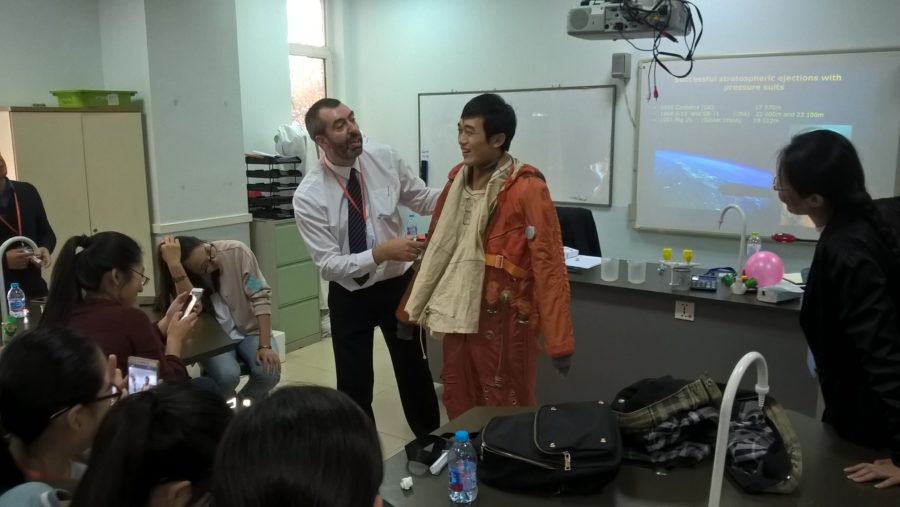Have you ever wondered what the difference is between a cosmonaut and an astronaut? Or why most rocket launch sites are near the equator? Or actually how far above your head is Space? Well I’ve got answers to those at the foot of this blog. But another thing you might want to ask yourself (particularly if you have children) – would the teaching of space science in your physics classes at school have made that subject more interesting? It certainly would have for me. In fact using space science as a context for teaching physics is a programme run by the UK National Space Academy based in Leicester using physics teachers from across the UK. It is a way of learning that seeks to inspire children (both in lower and higher level physics) in understanding more about space science and its association with the laws of physics. And related to that it allows children to learn some of the fundamental questions for humankind – how did life begin? Are we alone in this Universe? What is the Universe made from?
Rockets, Space Craft, Space Stations, Planets, Astronauts and Satellites are all interesting themes for children (and hopefully adults) and through this programme some may be inspired to seek a career in the space industry as a scientist or an engineer or in software design. The space sector is growing at 9% per year in the UK; contributing more and more value to the UK economy. In China the Government has prioritised innovation in high-tech industries as the driver for economic development. Although China is now a space superpower it also recognises the need to adapt its education system to enable innovation to flourish in its universities and enterprises, so that it can build capability to drive their new model of economic growth.
Last week I had the pleasure of attending a teaching session run by the National Space Academy in Beijing which was set up to teach teachers, who would then cascade the lessons to their own students. It is a programme supported by SIN China and the Prosperity Fund, a case study is available here. The teachers, from all across China, were captivated by a programme which used practical methods in teaching issues such rocket propulsion, gravity, pressure, the magnetosphere, solar winds as well as life in space (and the Tim Peake experience). Next month the programme moves to Shanghai and will teach both students and teachers.
Inspirational teaching? Absolutely! I wish I had been taught this when I did physics many, many moons ago. I may have made a more strategic choice in my career path. But then again I also wanted to be a fireman, a soldier, a pilot, an actor………..
I promised answers to the questions in my opener. Astronauts and Cosmonauts are the same; only Russia uses the latter term. Why the equator for rockets? The earth moves faster there and helps accelerate the rocket to orbital speed, saving on fuel. Space is only 60 miles above your head.

